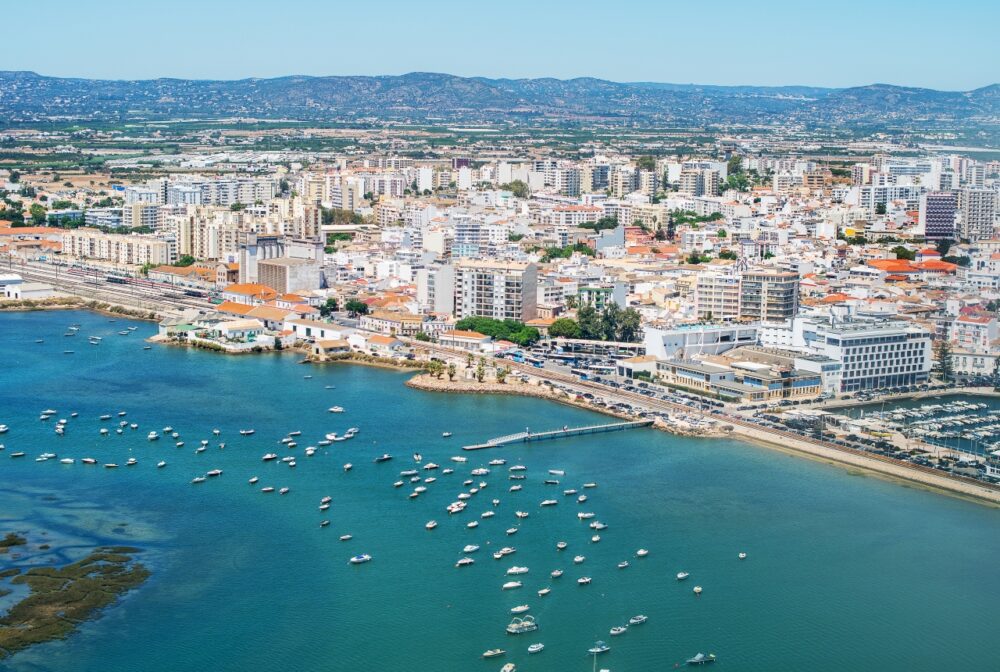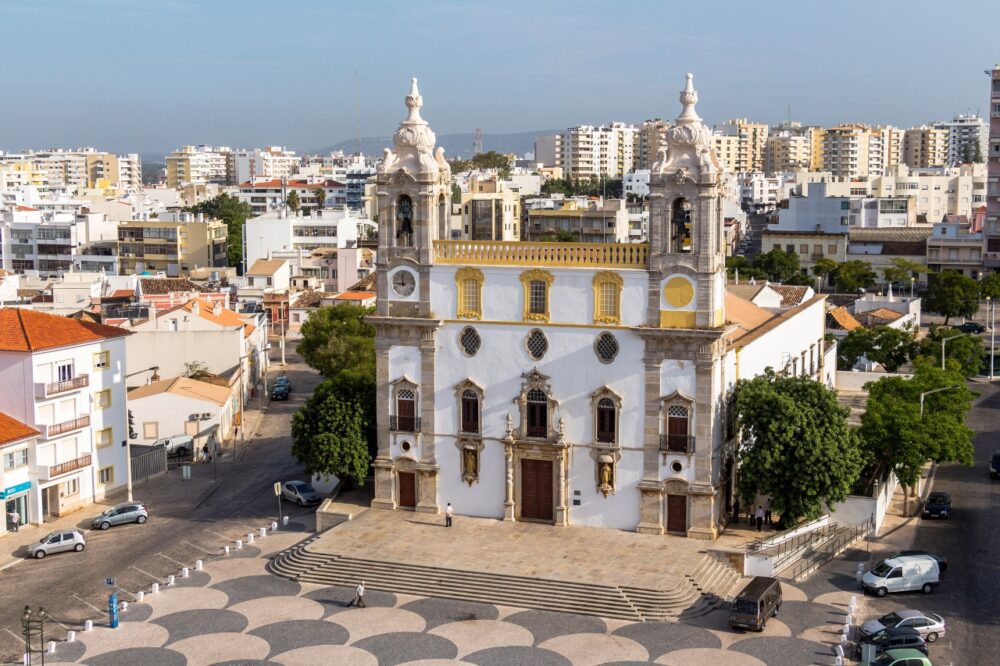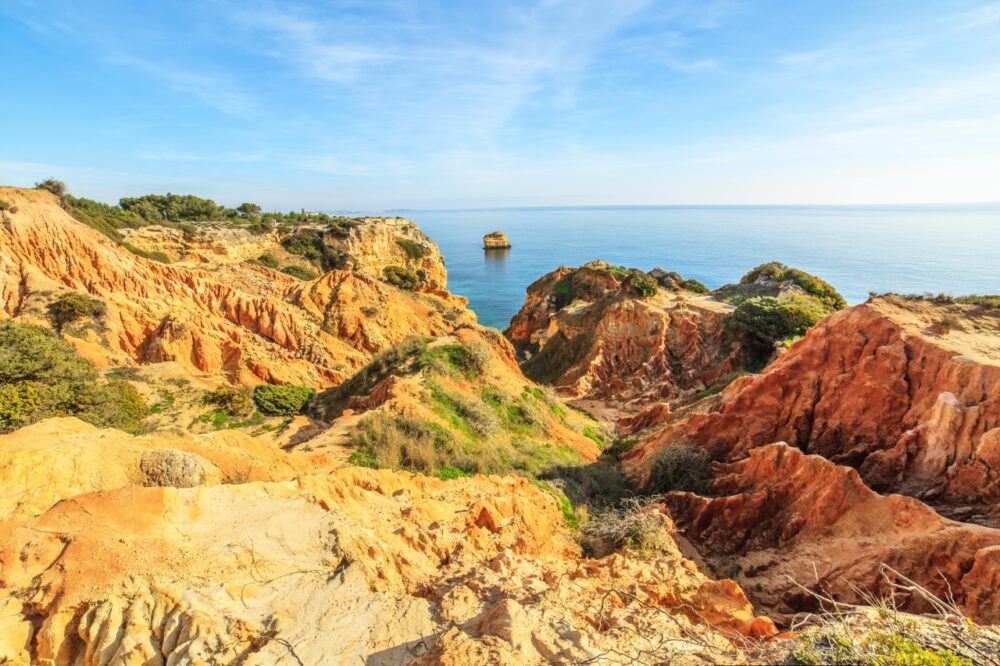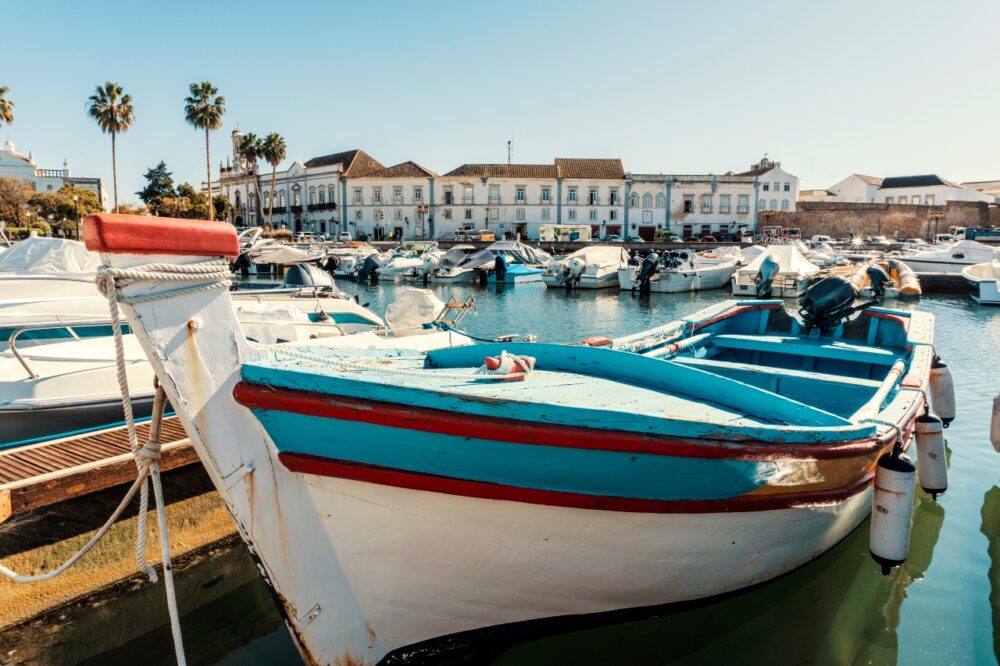
Is Faro worth visiting? Absolutely! The first time I visited Faro, I was pleasantly surprised by its laid-back charm and rich history. Often overlooked in favour of the Algarve’s more touristy beach towns, Faro offers something different—a taste of authentic Portuguese life, surrounded by stunning natural beauty. Wandering through its cobbled streets, discovering ancient city walls, and exploring the peaceful Ria Formosa lagoon, I realised that Faro is one of the Algarve’s best-kept secrets.
Located in southern Portugal, Faro is the gateway to the Algarve region, but it’s much more than just a transit hub. The city’s historic Old Town, with its whitewashed buildings and intricate tiles, is packed with charm. Its cathedral, medieval gates, and atmospheric plazas are a delight to explore, while the nearby Ria Formosa Nature Reserve is perfect for birdwatching and boat trips. Faro also boasts a vibrant food scene, where you can enjoy everything from fresh seafood to classic Portuguese pastries. Whether you’re after culture, nature, or just a relaxing getaway, Faro has it all.
But is Faro worth visiting for you? In this blog post, we’ll explore the top 10 reasons why Faro should be on your travel list, from its fascinating history to its stunning natural surroundings. Plus, we’ll share travel tips to help you plan your visit to this underrated gem. Keep reading to find out why Faro is a must-visit destination in Portugal.
Table of Contents
Pros – Reasons You Should Visit Faro
1. Rich History and Charming Old Town

Faro’s historic centre, or Cidade Velha, is a maze of cobblestone streets, ancient walls, and charming plazas that reflect its rich past.
I wandered through the Arco da Vila, a grand gateway into the old town, and immediately felt like I’d stepped back in time. Highlights include the Sé Catedral, where you can climb the tower for panoramic views, and the Arco do Repouso, said to date back to Moorish rule. The old town’s peaceful vibe, combined with its fascinating history, makes it an ideal place to explore at a leisurely pace.
2. Stunning Ria Formosa Natural Park

One of Faro’s biggest draws is its proximity to the Ria Formosa, a lagoon system of islands, sandbanks, and waterways that’s a haven for wildlife and a paradise for nature lovers.
I joined a boat tour through the lagoon and was captivated by its tranquil beauty. The area is home to flamingos, spoonbills, and a variety of fish, making it a must-visit for birdwatchers and eco-tourists. For a more active experience, kayaking or paddleboarding through the waterways offers a closer connection to this unique ecosystem.
3. Beautiful Beaches

While Faro itself doesn’t have a beach within walking distance, the surrounding area boasts some of the Algarve’s most pristine and less crowded shores.
I took a short ferry ride to Praia de Faro, a long stretch of golden sand perfect for swimming, sunbathing, and relaxing. For a more secluded experience, the islands of Ilha Deserta and Ilha do Farol offer unspoiled beauty with fewer tourists. Don’t forget to pack snacks and plenty of water if you’re heading to the more remote spots.
4. Excellent Dining Scene
Faro’s food scene is a mix of traditional Algarve flavours and innovative cuisine, with a strong emphasis on fresh seafood.
I couldn’t resist the cataplana, a seafood stew served in a copper pot, at a small restaurant near the marina. For something quick and delicious, the local seafood markets offer a chance to try freshly grilled sardines. Faro’s diverse range of dining options means there’s something to satisfy every palate and budget.
5. A Gateway to the Algarve
Faro’s central location makes it the perfect base for exploring the rest of the Algarve, with its picturesque villages and dramatic coastal cliffs.
I took a day trip to Tavira, a charming town just east of Faro, and found it to be a lovely complement to the city’s vibe. The excellent public transport links, including trains and buses, make it easy to venture further afield without the need for a car.
6. Vibrant Local Culture

Unlike some Algarve towns that feel dominated by tourism, Faro retains an authentic Portuguese atmosphere.
Strolling through the streets, I encountered lively cafes filled with locals and stumbled upon a small fado performance in an unassuming bar. The energy in Faro feels more genuine, offering a glimpse into everyday life in the Algarve.
7. Affordable Compared to Other Algarve Towns
Faro is surprisingly budget-friendly compared to some of the Algarve’s more tourist-heavy destinations like Albufeira or Lagos.
I stayed in a charming guesthouse for a fraction of what I would have paid elsewhere. Meals at local eateries were equally affordable, making Faro a great choice for travellers looking to stretch their budget.
8. Fascinating Museums
Faro is home to a handful of intriguing museums that shed light on the region’s history and culture.
The Museu Municipal, housed in a former convent, showcases everything from Roman artefacts to stunning azulejo tiles. I also visited the Museu Marítimo, which offers insights into the Algarve’s fishing traditions and maritime heritage. These cultural stops provide a deeper appreciation of Faro’s past and present.
9. Pedestrian-Friendly Streets
Faro’s compact size and pedestrian-friendly streets make it easy to explore without the need for a car.
I enjoyed leisurely strolls along the Rua de Santo António, a bustling shopping street lined with cafes and boutiques. The lack of traffic in the old town adds to its charm, allowing you to soak in the atmosphere without the hum of cars in the background.
10. Warm and Welcoming Locals
The people of Faro are known for their warmth and hospitality, always eager to share their love for their city with visitors.
From the café owner who patiently explained the best local dishes to the boat captain who shared stories of the Ria Formosa, every interaction felt genuine. Learning a few basic Portuguese phrases, like “Bom dia” (Good morning) and “Obrigado” (Thank you), goes a long way in building connections with the locals.
Cons – Things to Consider When Visiting Faro
1. Lack of a Central Beach
While Faro has access to beautiful beaches, they require a ferry or a short drive, which might not appeal to those wanting a beach at their doorstep.
I found the ferry ride to Praia de Faro enjoyable, but it did add extra planning to my day. If you’re looking for a beach holiday where you can step straight onto the sand, other Algarve towns might be more convenient.
2. Limited Nightlife
Faro’s nightlife is more subdued compared to party destinations like Lagos or Albufeira, which may disappoint those seeking a lively evening scene.
After dinner, I enjoyed a quiet drink at a riverside bar, but the options for late-night entertainment felt limited. Faro is better suited to those who prefer a relaxed evening over high-energy clubbing.
3. Small Size
Faro’s compact size means there are fewer attractions and activities compared to larger cities like Lisbon or Porto.
I found that two to three days was enough to explore Faro’s main sights, which might feel too short for those seeking a more action-packed itinerary. However, its size also makes it a great base for day trips to nearby attractions.
4. Seasonal Closures
Many businesses in Faro operate seasonally, particularly those catering to tourists, which can lead to limited options during the off-season.
When I visited in early spring, I noticed some restaurants and tour operators were still gearing up for the summer crowds. Planning your trip during the busier months ensures that everything is open, but it also means dealing with more tourists.
5. Weather Can Be Unpredictable
While Faro generally enjoys a sunny Mediterranean climate, occasional rain showers or cooler days can occur, especially outside the summer months.
During my October visit, a sudden downpour caught me off guard as I explored the old town. Packing a lightweight rain jacket or umbrella is a smart move, particularly in spring or autumn.
When to Visit Faro
The best times to visit Faro are spring (March to June) and autumn (September to October), when the weather is warm and ideal for exploring the city and its surrounding nature reserves. These seasons also offer fewer crowds and better prices than the summer high season. Summer (July to August) is popular for its lively beaches and festivals, though it can get busy and hot. Winters are mild and quiet, making them perfect for a relaxing getaway, with plenty of opportunities to enjoy Faro’s historic charm.
How to Get to Faro
Faro Airport (FAO) is just 7 kilometres from the city centre and serves as the main hub for the Algarve, with flights from major European cities via airlines like Ryanair, easyJet, and TAP Air Portugal. From the airport, buses and taxis provide quick and affordable connections to the city in about 15 minutes. For travellers coming from Lisbon or Seville, Faro is accessible by train or long-distance buses, making it a convenient stop on a broader Iberian itinerary.
Where to Stay in Faro
Faro offers a range of accommodation options to suit various tastes and budgets:
- Luxury: City Centre or Marina Area – Stay close to Faro’s historic Old Town and waterfront. Consider Hotel Faro & Beach Club, offering rooftop views and modern comfort, or AP Eva Senses Hotel, known for its prime location and amenities.
- Mid-range: Old Town or Residential Districts – Perfect for blending local charm with comfort. Options include Stay Hotel Faro Centro, which is centrally located, and Faro Boutique Hotel, offering great value with stylish touches.
- Budget: Around the Train Station or Outskirts – Affordable choices like Algarve Hostel or small guesthouses provide budget-friendly stays with easy access to transport links.
Getting Around Faro
Faro’s compact size makes it easy to explore on foot, particularly the Old Town (Cidade Velha), marina, and nearby attractions. For longer distances, the city’s Eva Transportes bus network is reliable and connects to nearby beaches like Praia de Faro and attractions like the Ria Formosa Natural Park. Taxis and ride-hailing apps like Bolt are available for short trips, while renting a bike is a fantastic way to explore the coastal trails and nature reserves. For island hopping, ferries and boat tours depart regularly from Faro’s marina.
How Long to Spend in Faro
Two to three days is perfect for exploring Faro’s highlights, including the Arco da Vila, Sé Cathedral, and the stunning lagoon of the Ria Formosa Natural Park. This allows time to wander the cobbled streets of the Old Town, enjoy local seafood, and take a ferry to the nearby barrier islands for a beach day. With an extra day, consider a trip to Estoi to see its grand palace or a guided tour of the Algarve’s salt pans. Faro’s mix of history, nature, and coastal charm makes it a rewarding destination for both short and leisurely visits.
Conclusion
So, is Faro worth visiting? Absolutely! With its historic Old Town, stunning Ria Formosa lagoon, and authentic Portuguese atmosphere, Faro offers an experience that’s both cultural and relaxing. Highlights like its ancient city walls, delicious food scene, and easy access to pristine islands make it a must-visit in Portugal. While it’s quieter than other Algarve hotspots, that’s part of its charm—it’s the perfect escape from the crowds. If you’re ready to discover a more authentic side of the Algarve, start planning your trip to Faro today!
